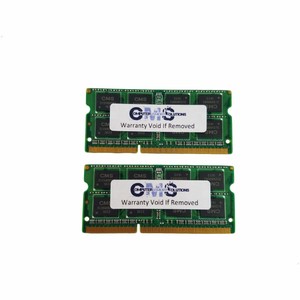

- #MACBOOK PRO EARLY 2009 RAM UPGRADE INSTALL#
- #MACBOOK PRO EARLY 2009 RAM UPGRADE UPGRADE#
- #MACBOOK PRO EARLY 2009 RAM UPGRADE MAC#
8 GB of RAM is plenty for most multitasking workloads.įor about $200 and a few hours of work, my fianc é has a MacBook Pro that performs her daily computing tasks as well as a $1,000+ brand new model.

#MACBOOK PRO EARLY 2009 RAM UPGRADE UPGRADE#
With RAM being relatively inexpensive, it makes a nice upgrade too, especially if you find yourself multitasking a lot. I highly recommend an SSD upgrade over a new MacBook Pro if yours is less than 5 years old and you don’t need the latest hardware features like a Retina display or Airplay mirroring. The Crucial M500 SSD has a 3 Gigabit Negotiated Link Speed. Applications open in a few seconds or less instead of taking up to a minute to open. I’m getting a 3 Gigabit link speed instead of 1.5 in the System Report, and I can boot it and launch a browser in less than a minute. The MacBook Pro now feels like a brand new machine. I simply dragged and dropped files from the Time Machine backup because I didn’t need to keep any apps from the previous installation.
#MACBOOK PRO EARLY 2009 RAM UPGRADE INSTALL#
#MACBOOK PRO EARLY 2009 RAM UPGRADE MAC#
I also picked up a Crucial 2x4GB DDR3 1066 Mac memory kit.įor the installation process, there are plenty of blogs and tutorials so I won’t go into full details here. After browsing a few discussions on Apple’s support site and reading some reviews, I ordered a Crucial M500 240GB SSD because others reported good compatibility with the specific nVidia chipset (MCP79) in this 2009 MacBook Pro 13″. Knowing that others had success with SSD and RAM upgrades in this MacBook model, I decided to pull the trigger on new hardware. I decided against that because even the best-case scenario would still be slow compared to the SSD speeds I’m used to on my personal desktop and my company MacBook with an SSD. The only “free” option that I really had left was to backup the data, reformat the hard drive, and install a fresh copy of OS X. Nothing seemed to make a difference, and after an agonizing afternoon slowly upgrading to OS X Mountain Lion, I decided to get serious about fixing the problem. This was bad even for the hardware it had, so I tried a few different solutions, including upgrading to OS X Lion, fixing disk permissions, and general hard drive cleanup (defrag, deleting applications and files that were no longer needed, etc.). From a cold boot, it took about 4 minutes to load the OS and stop thrashing the hard drive so you could open a browser or iTunes.

When I first used this laptop in 2013 (four years after it was manufactured) it was running OS X Snow Leopard. A few searches online uncovered others who had similar setups and successfully upgraded them to modern performance standards with an SSD and additional RAM. While it probably worked great when it was new, five years later it had become painfully slow (#firstworldproblems) with its 2GB of RAM and 160GB HDD. My fianc é has a 13″ MacBook Pro from 2009.


 0 kommentar(er)
0 kommentar(er)
